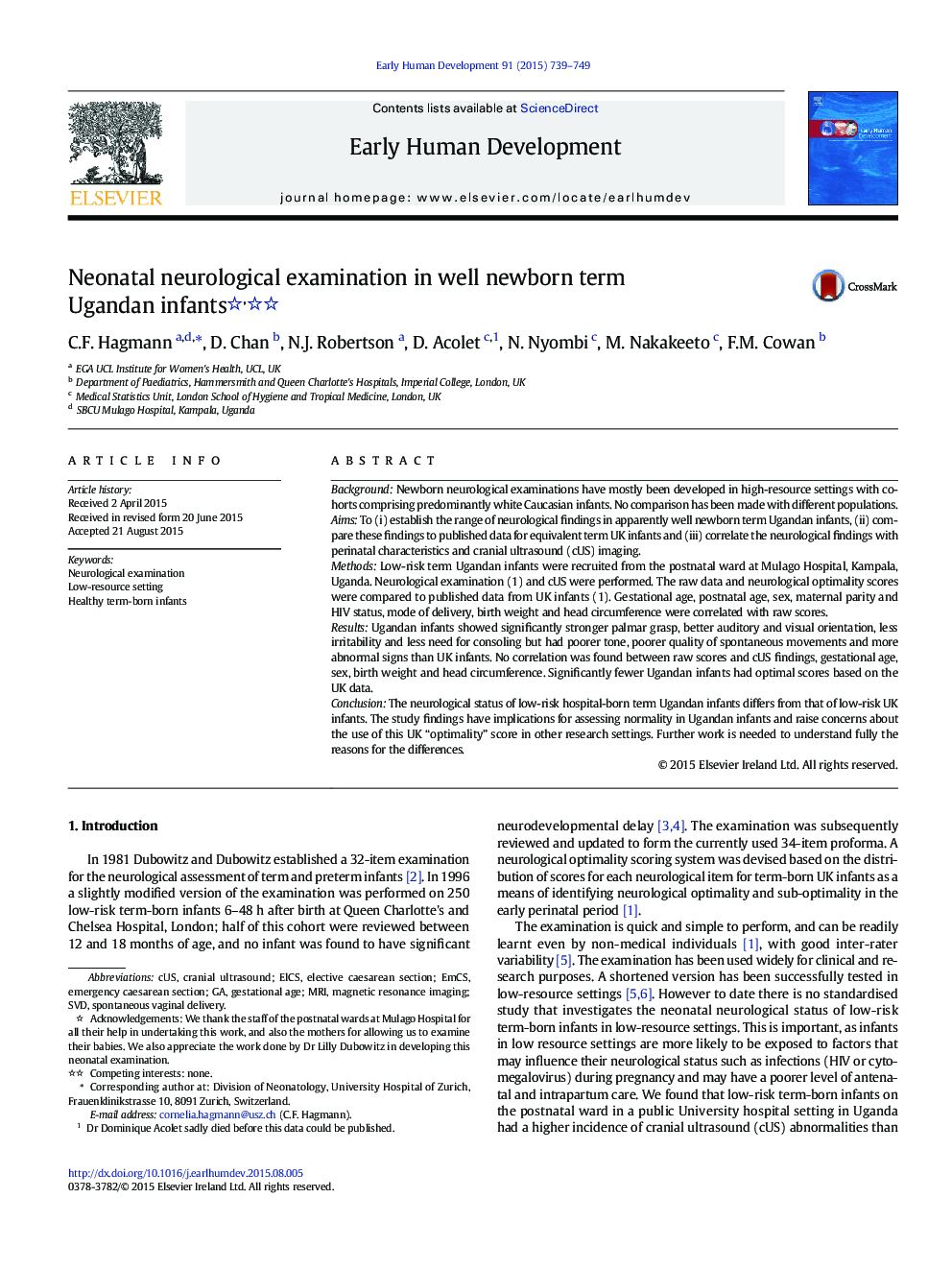| Article ID | Journal | Published Year | Pages | File Type |
|---|---|---|---|---|
| 3916710 | Early Human Development | 2015 | 11 Pages |
•Ugandan infants showed stronger palmar grasp, better auditory and visual orientation than UK infants.•No correlation was found between raw scores and cUS findings.•Fewer Ugandan infants had optimal scores based on the UK data.
BackgroundNewborn neurological examinations have mostly been developed in high-resource settings with cohorts comprising predominantly white Caucasian infants. No comparison has been made with different populations.AimsTo (i) establish the range of neurological findings in apparently well newborn term Ugandan infants, (ii) compare these findings to published data for equivalent term UK infants and (iii) correlate the neurological findings with perinatal characteristics and cranial ultrasound (cUS) imaging.MethodsLow-risk term Ugandan infants were recruited from the postnatal ward at Mulago Hospital, Kampala, Uganda. Neurological examination (1) and cUS were performed. The raw data and neurological optimality scores were compared to published data from UK infants (1). Gestational age, postnatal age, sex, maternal parity and HIV status, mode of delivery, birth weight and head circumference were correlated with raw scores.ResultsUgandan infants showed significantly stronger palmar grasp, better auditory and visual orientation, less irritability and less need for consoling but had poorer tone, poorer quality of spontaneous movements and more abnormal signs than UK infants. No correlation was found between raw scores and cUS findings, gestational age, sex, birth weight and head circumference. Significantly fewer Ugandan infants had optimal scores based on the UK data.ConclusionThe neurological status of low-risk hospital-born term Ugandan infants differs from that of low-risk UK infants. The study findings have implications for assessing normality in Ugandan infants and raise concerns about the use of this UK “optimality” score in other research settings. Further work is needed to understand fully the reasons for the differences.
